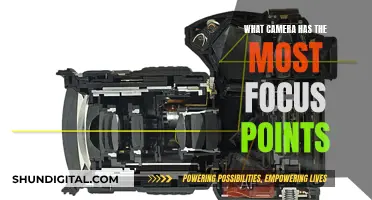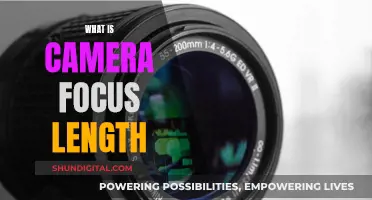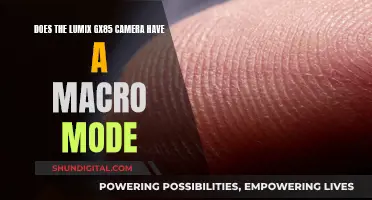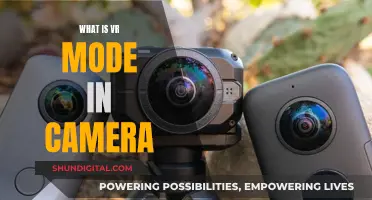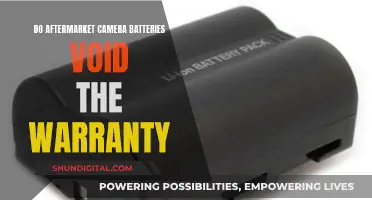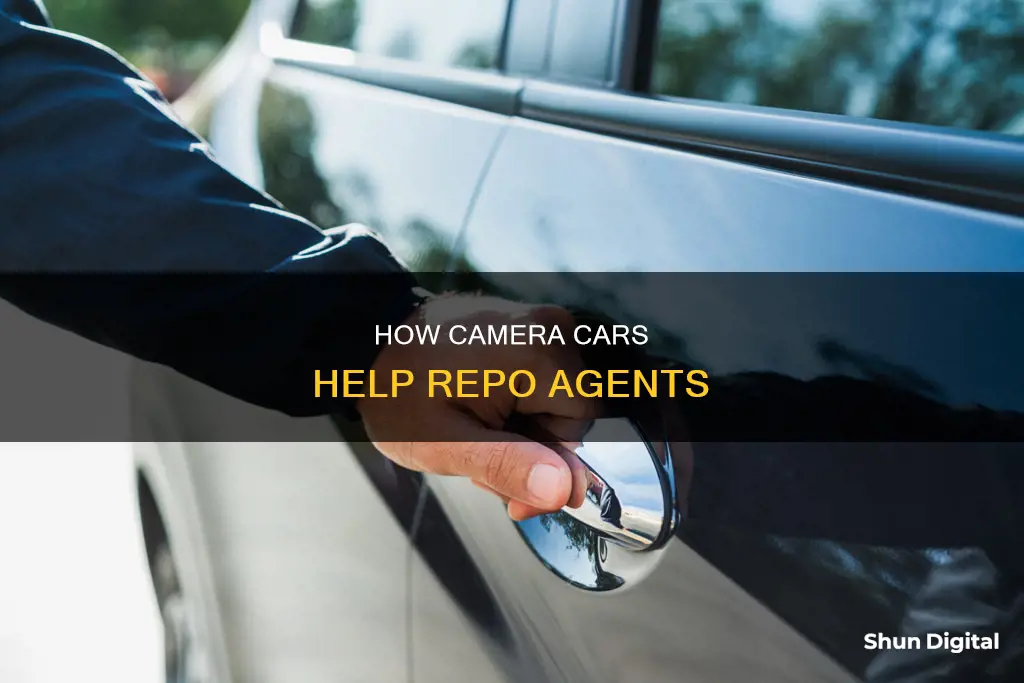
Repo agents use camera cars to track down vehicles that are subject to repossession due to late car payments or delinquent loans. These camera cars are equipped with license plate recognition (LPR) technology, which scans license plates and cross-references the data with financial institutions to identify vehicles associated with late car loan payments. The use of LPR technology has revolutionized the repossession business, enabling some repo agents to double the number of cars they seize. Camera cars are often used in conjunction with tow trucks, with the former gaining access to private parking lots to locate the vehicle and the latter being called in once the target vehicle is spotted.
| Characteristics | Values |
|---|---|
| Purpose | To locate vehicles for repossession |
| Technology | License Plate Recognition (LPR) cameras |
| Operation | Drive around assigned areas scanning license plates |
| Data | Instantly cross-reference license plate numbers with financial institutions |
| Outcome | If there is a hit, the car becomes a repo target |
| Salary | $10-$80 per hour |
What You'll Learn
- Camera cars are used by repo agents to scan license plates in parking lots, on roads, and in other locations
- The data is then fed into private databases and sold to insurers, banks, and law enforcement agencies
- This data can be used to locate witnesses or people who need to be served subpoenas
- The use of camera cars has doubled the number of cars repo agents can seize
- There are no laws preventing repo companies from taking pictures of cars in public and storing them in databases

Camera cars are used by repo agents to scan license plates in parking lots, on roads, and in other locations
LPR technology has revolutionized the repossession business, enabling repo agents to double the number of cars they seize. The cameras can be attached to the hood of a car, allowing them to scan vehicles in every direction and scoop up license plate data. This data is fed into private databases and then sold to various organizations without the knowledge or consent of the vehicle owners. The data collected includes not just the license plate number but also the time, date, and location the plate was scanned.
The use of LPR technology by repo agents has raised concerns about privacy and the potential for abuse of information. While there are no laws preventing repo companies from taking pictures of cars in public spaces, some people feel that their civil liberties are being violated. Critics argue that sensitive information could fall into the wrong hands, such as stalkers or individuals with restraining orders. However, proponents of LPR technology argue that it helps in catching "bad guys" who intentionally buy cars with no intention of paying for them.
The data collected by LPR cameras has also proven useful for purposes beyond repossession. Private investigators, for example, use this information to locate people who need to be served subpoenas or who have judgments against them. Additionally, LPR technology has been employed by law enforcement agencies to find stolen cars and criminals.
While the use of LPR technology by repo agents has its benefits, it also underscores the need for legislative action to protect individuals' privacy and personal information. Without clear laws governing the collection, storage, and sharing of license plate data, there is a risk of this sensitive information falling into the wrong hands or being used for purposes beyond what individuals may consider acceptable.
Troubleshooting an Inverted Computer Camera: What You Need to Know
You may want to see also

The data is then fed into private databases and sold to insurers, banks, and law enforcement agencies
In recent years, the repossession business has been revolutionized by license plate recognition (LPR) systems, which are equipped with cameras and database access. These LPR cameras, often attached to the hood of a car, can scan and capture images of license plates on public roads, in parking lots, and in other locations. The data collected by these cameras is not limited to the license plates of delinquent borrowers but includes all cars scanned.
This data is then fed into private databases and sold to insurers, banks, and law enforcement agencies without the knowledge or consent of those affected. The companies that collect and sell this data, such as DRN and MVTrac, argue that they are helping to catch bad guys and providing a valuable tool for law enforcement. Privacy experts and advocates, however, express concern over the lack of regulation and the potential for abuse of information. They worry that the technology is outpacing the law, and that sensitive information could fall into the wrong hands, including stalkers and domestic abusers.
The data collected by LPR cameras creates a digital snapshot of people's lives, tracking their movements and locations. These cameras can capture up to 1600 license plates an hour, and the data is stored in databases with over a billion records, including the time, date, and location the plate was collected. This information can reveal personal details about an individual, such as where they go to pray, if they visit a gay bar, or if they attend a political group. While LPR cameras can aid in catching criminals, as in the case of a student's killer at USC, critics argue that more legal restrictions are needed to protect individuals' privacy and safety.
The data collected by these LPR camera systems is valuable not only to repossession agents but also to insurers, banks, and law enforcement agencies. By having access to this data, these entities can track and monitor individuals' movements and locations. This information can be used to identify patterns, connections, and potential risks. For example, insurers may use the data to identify individuals who frequently visit dangerous areas or engage in risky behaviors, while banks may use it to track individuals' spending habits and locations.
The sale of this data raises ethical and legal concerns, particularly around privacy and consent. While the companies collecting the data argue that there is no expectation of privacy in public spaces, privacy advocates argue that individuals should have a right to opt out of this tracking and that more regulations are needed to protect people's personal information.
Cars with Passenger-Side Lane Cameras: Which Models Have Them?
You may want to see also

This data can be used to locate witnesses or people who need to be served subpoenas
Camera cars are vehicles equipped with license plate recognition (LPR) technology, which helps repossession agents locate vehicles that need to be seized from delinquent borrowers. LPR cameras can capture up to 1600 license plates per hour, creating a comprehensive digital record of a vehicle's movements. This data can be used to locate witnesses or people who need to be served subpoenas in a variety of ways.
Firstly, LPR data can be used to identify the whereabouts of individuals who may have witnessed a crime or incident. By reviewing the license plate data of vehicles in the area at the time of an incident, investigators can create a list of potential witnesses to interview. This can be particularly useful in cases where there is limited information about the incident or where witnesses may not have come forward voluntarily.
Secondly, LPR data can be used to locate individuals who are the subject of a subpoena. For example, if a person is evading service of a subpoena, LPR data can be used to track their movements and identify locations they frequent, such as their residence, workplace, or other places they visit regularly. This information can then be used to attempt service of the subpoena at a time and place where the individual is likely to be found.
Thirdly, LPR data can be used to identify vehicles that were involved in an incident, which may lead to the identification of witnesses or individuals to be served with a subpoena. For example, in a hit-and-run accident, LPR data can be used to identify the vehicle that fled the scene, and investigators can then attempt to locate the driver of that vehicle, who may be a key witness or the subject of a subpoena.
It is important to note that the use of LPR data for these purposes must comply with legal regulations and respect privacy boundaries. The collection and use of LPR data is subject to privacy laws and regulations, and it cannot be used to violate the privacy rights of individuals. However, when used appropriately, LPR data can be a valuable tool for locating witnesses and individuals to be served with subpoenas.
The Making of Akaso Cameras: Where Are They From?
You may want to see also

The use of camera cars has doubled the number of cars repo agents can seize
The use of camera cars has transformed the repossession business, enabling agents to double the number of vehicles they seize. These camera cars are equipped with license plate recognition (LPR) technology, which involves mounting high-speed cameras on vehicles to scan and capture license plates on public roads, parking lots, and other locations. The system instantly cross-references the captured license plate numbers with financial institutions to identify vehicles associated with late car loan payments or delinquent borrowers. This technology has streamlined the repossession process, making it faster and more efficient for repo agents.
Prior to the advent of LPR technology, repo agents relied on traditional methods such as GPS tracking systems, skip tracing techniques, and physical surveillance to locate vehicles for repossession. While these methods remain in use, LPR cameras have become a preferred tool due to their speed and accuracy. The cameras can capture up to 1600 license plates per hour, creating a vast digital database that aids in the swift identification and recovery of vehicles.
The use of camera cars has raised concerns among privacy advocates. While it is legal for repo companies to take pictures of cars in public spaces, the vast amount of data collected includes information on all scanned vehicles, not just those targeted for repossession. This data is valuable not only to repo agents but also to private companies, insurers, banks, and law enforcement agencies. There are no current laws restricting the sharing and selling of license plate data, and the information collected can be used for purposes beyond vehicle repossession. This has sparked debates about the balance between public safety, privacy, and the appropriate use of technology.
Despite the concerns, the use of camera cars in the repossession industry is likely to continue growing. The efficiency and success rate of LPR technology have made it a valuable tool for repo agents, enabling them to significantly increase the number of vehicles they can seize. As a result, the use of camera cars has become an integral part of the repossession process, allowing agents to locate and recover vehicles more effectively than ever before.
The Focus Camera Strap: Wear and Care Guide
You may want to see also

There are no laws preventing repo companies from taking pictures of cars in public and storing them in databases
Repo companies employ a variety of methods and technologies to locate vehicles that are subject to repossession. One of the most notable technologies is the use of license plate recognition (LPR) systems, which are equipped with cameras and database access. These cameras are often mounted on cars, allowing them to scan license plates on public roads, in parking lots, and in other locations. The images captured by these cameras are then stored in large databases.
There are currently no laws preventing repo companies from taking pictures of cars in public spaces and storing them in databases. Attorney Russ Richelsoph states that "there are no laws preventing repo companies from taking pictures of your car while you are out in public and storing those photos in huge databases." This means that repo companies can freely capture and store images of license plates without legal repercussions.
The lack of legal restrictions on this practice has raised concerns among individuals like Jason DeManto, who expressed discomfort at the idea of his car being photographed and tracked. DeManto questions the purpose of this data collection and the potential invasion of privacy. He highlights the uncertainty of what happens to the information and who has access to it.
While the pictures themselves may not reveal much beyond the time and location of the vehicle, privacy advocates worry that the technology is outpacing the law. Jennifer Lynch, a privacy expert and attorney, points out that private companies have amassed databases containing over a billion records, including license plate information, time, date, and location. This extensive data collection can create a digital snapshot of individuals' lives, including their movements and frequent locations.
Until legislation is passed to regulate this practice, repo companies will continue to utilize camera technology to capture thousands of images of license plates, contributing to the growing databases of location information.
Hive Camera: Battery Operated or Not?
You may want to see also
Frequently asked questions
A camera car is a vehicle used by a repossession agent that is equipped with license plate recognition (LPR) technology. These cars have built-in cameras that scan license plates in parking lots, on public roads, and other locations to identify vehicles associated with late car loan payments or delinquent borrowers.
Camera cars use license plate recognition (LPR) technology to scan and capture images of license plates. The data collected, including the license plate number, time, date, and location, is then fed into private databases. If there is a match with a car targeted for repossession, the repo agent is alerted, and the vehicle can be located and recovered.
Camera cars have revolutionized the repossession business by enabling repo agents to automate and expedite the vehicle recovery process. They can reduce the time taken to recover vehicles by up to 50%. Additionally, the data collected by scanning license plates can be sold to other companies or used to generate new revenue streams.


